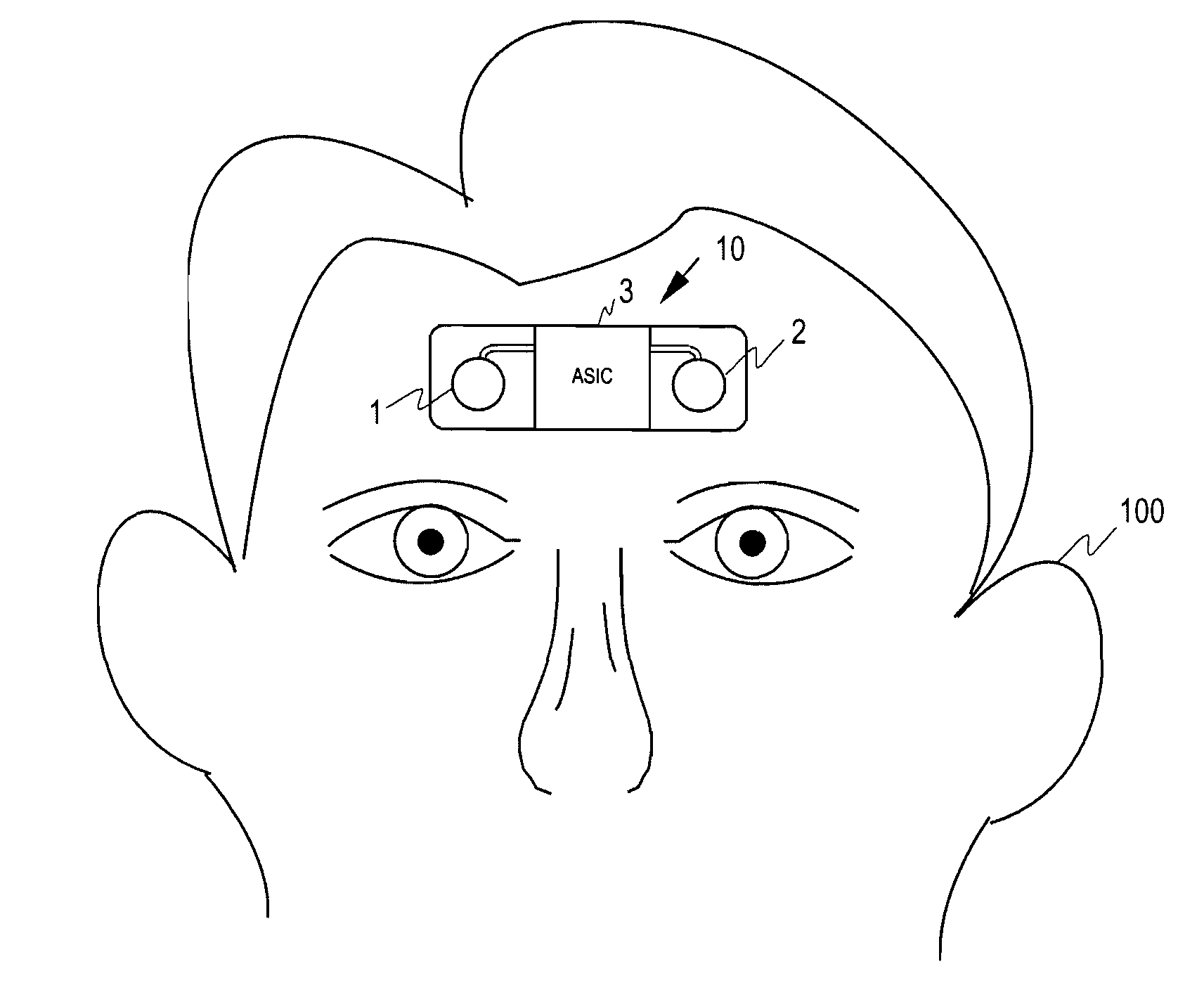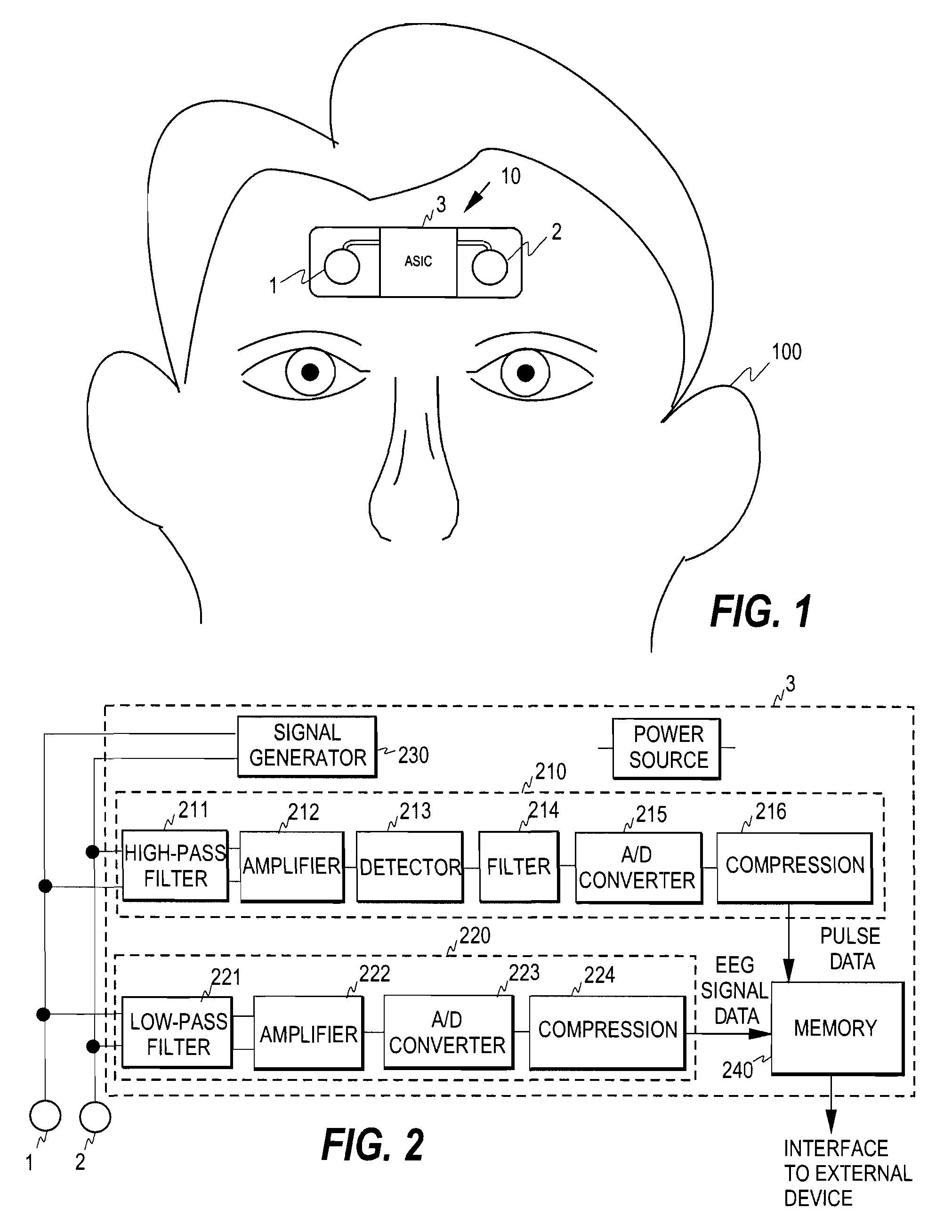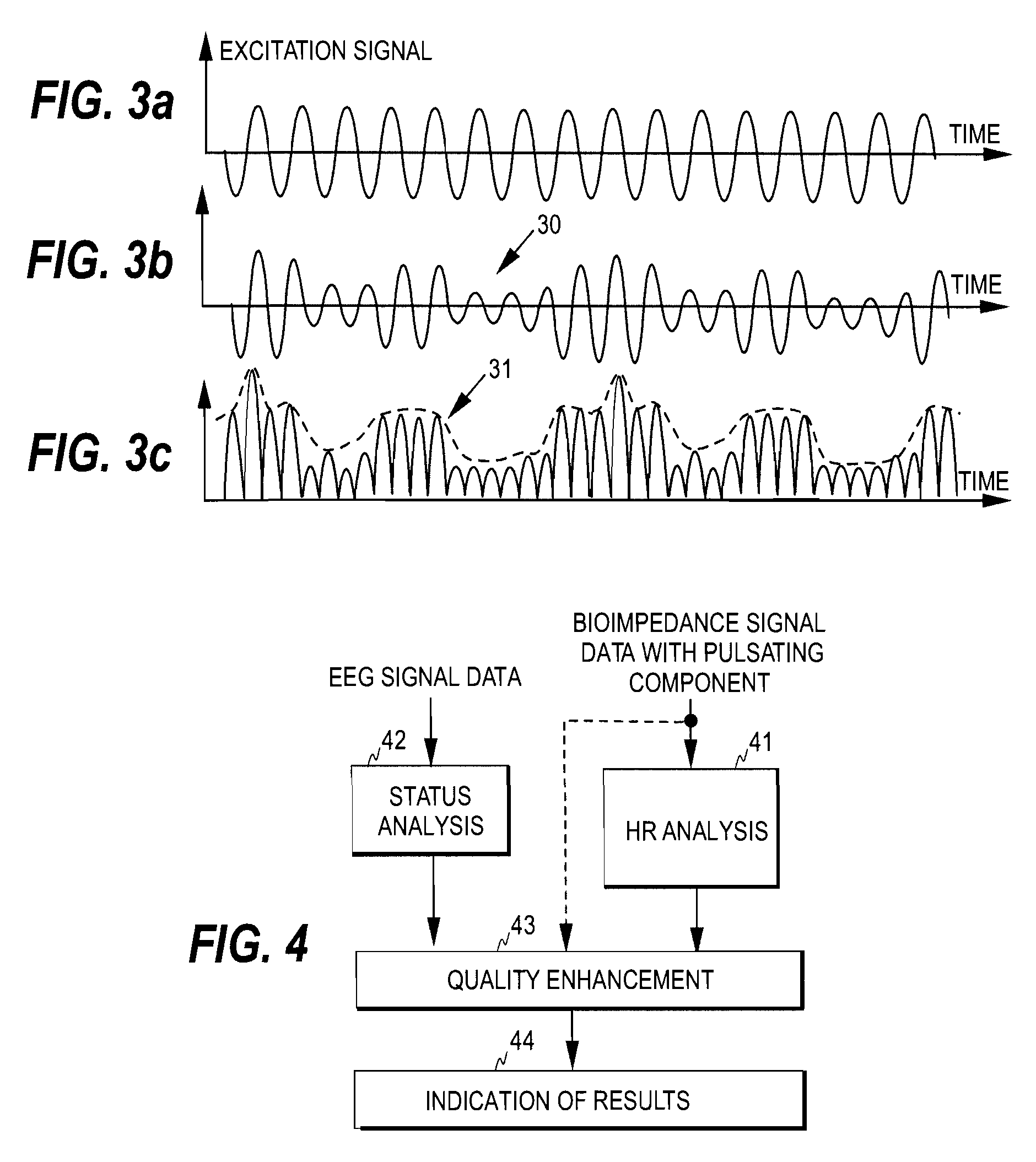Data recording for patient status analysis
a data recording and patient technology, applied in the field of physiological data recording, can solve the problems of low number of laboratories, difficult natural sleep, and separate sleep recording laboratories
- Summary
- Abstract
- Description
- Claims
- Application Information
AI Technical Summary
Benefits of technology
Problems solved by technology
Method used
Image
Examples
Embodiment Construction
[0037]FIG. 1 illustrates a cordless recording device and a recording process for collecting physiological data from a patient. The recording device 10 is placed on the forehead of a patient 100 to collect biosignal data when the patient is sleeping. The patient may attach the recording device on his / her forehead in the evening and the device may collect data for a preset time, such as over the night. The recording device may then be detached and the data collected may be read from the memory of the device to perform a sleep analysis.
[0038]The recording device comprises a set of electrodes 1, 2 and an associated electronic circuitry 3, which may be in the form of an ASIC chip (Application Specific Integrated Circuit).
[0039]The mechanical structure of the cordless recording device 10 may be as is shown in the above-mentioned U.S. Patent Application US 2006 / 0007796. In other words, the electrodes, the electronic circuitry, including the memory, and the power source may be placed on a f...
PUM
 Login to View More
Login to View More Abstract
Description
Claims
Application Information
 Login to View More
Login to View More - R&D
- Intellectual Property
- Life Sciences
- Materials
- Tech Scout
- Unparalleled Data Quality
- Higher Quality Content
- 60% Fewer Hallucinations
Browse by: Latest US Patents, China's latest patents, Technical Efficacy Thesaurus, Application Domain, Technology Topic, Popular Technical Reports.
© 2025 PatSnap. All rights reserved.Legal|Privacy policy|Modern Slavery Act Transparency Statement|Sitemap|About US| Contact US: help@patsnap.com



